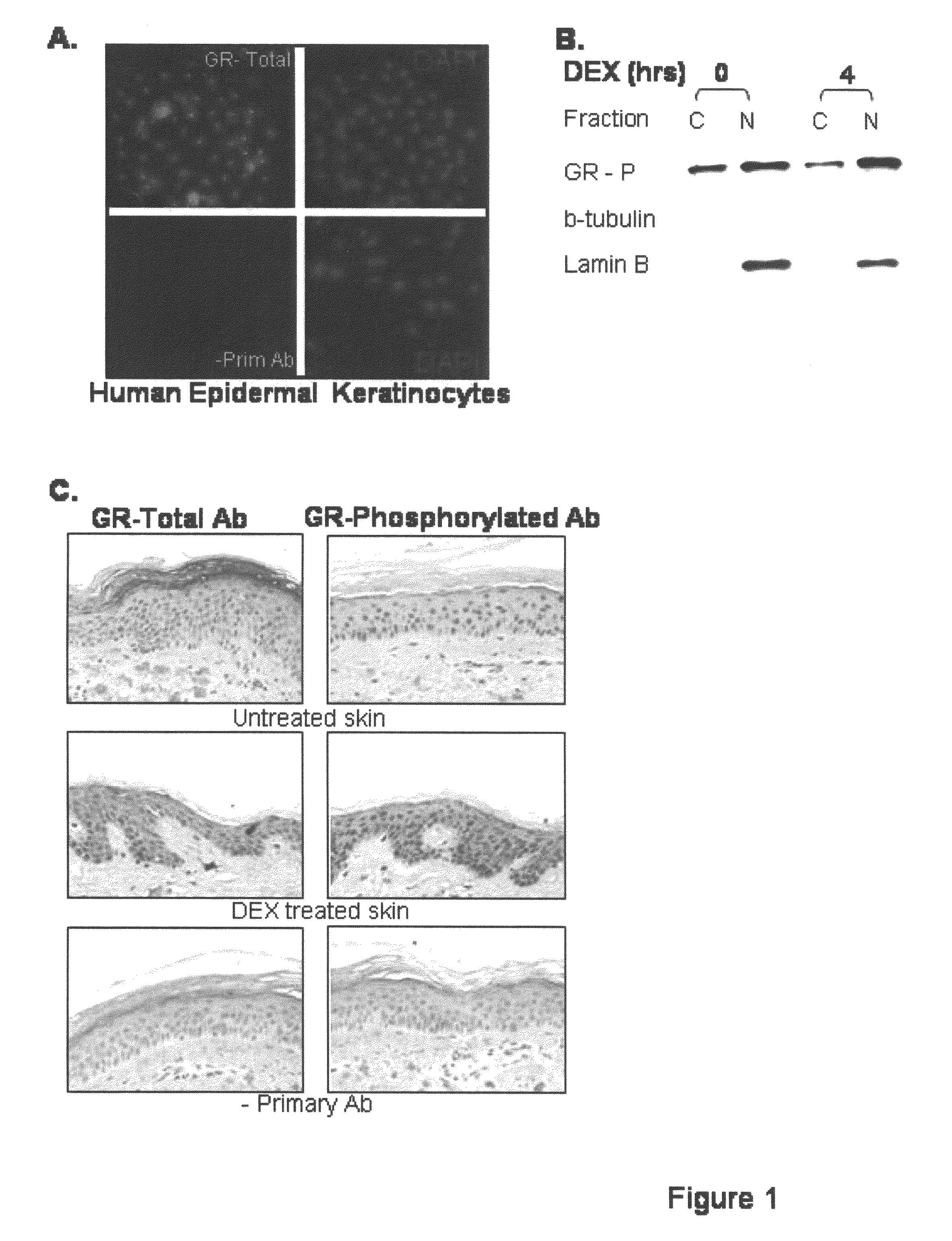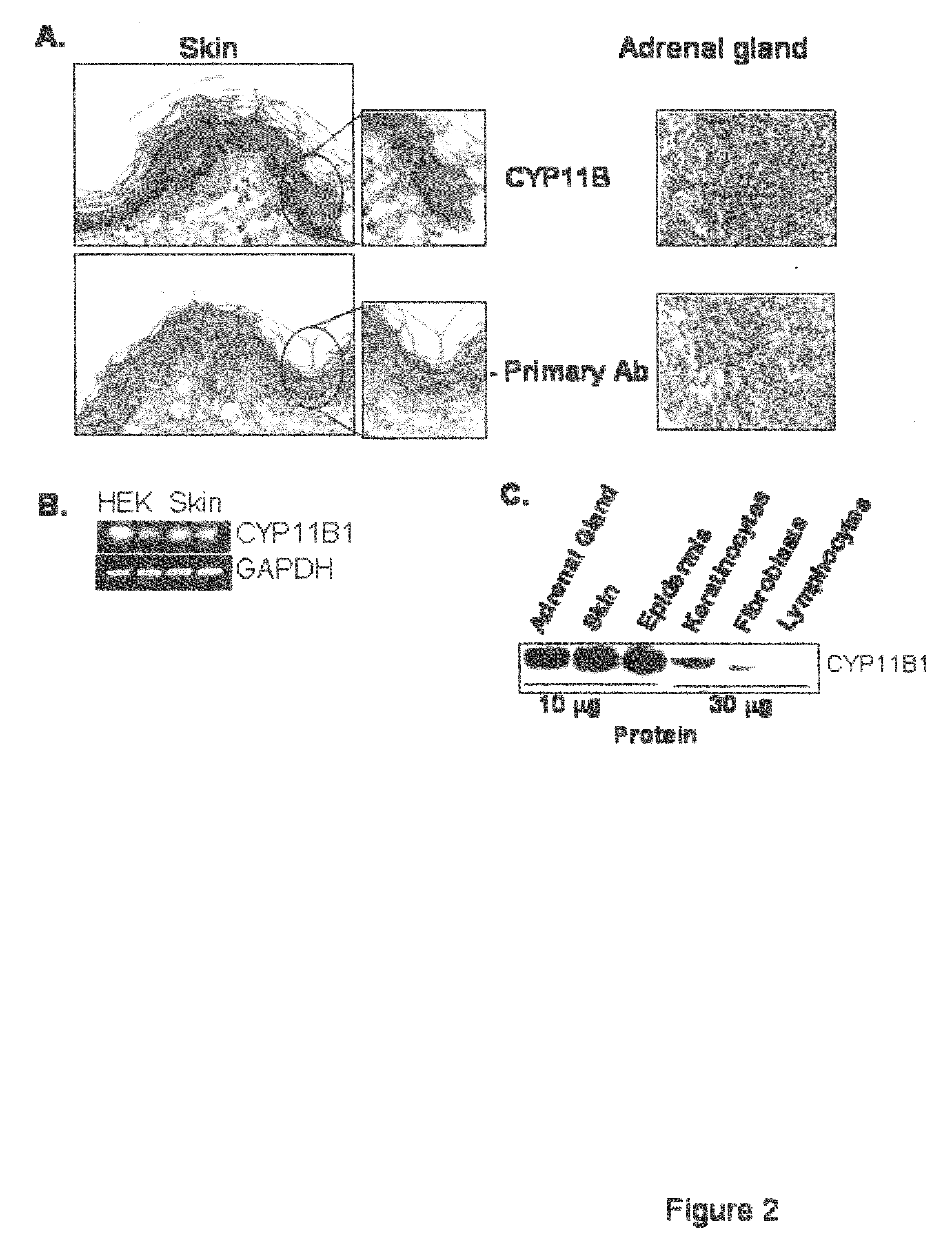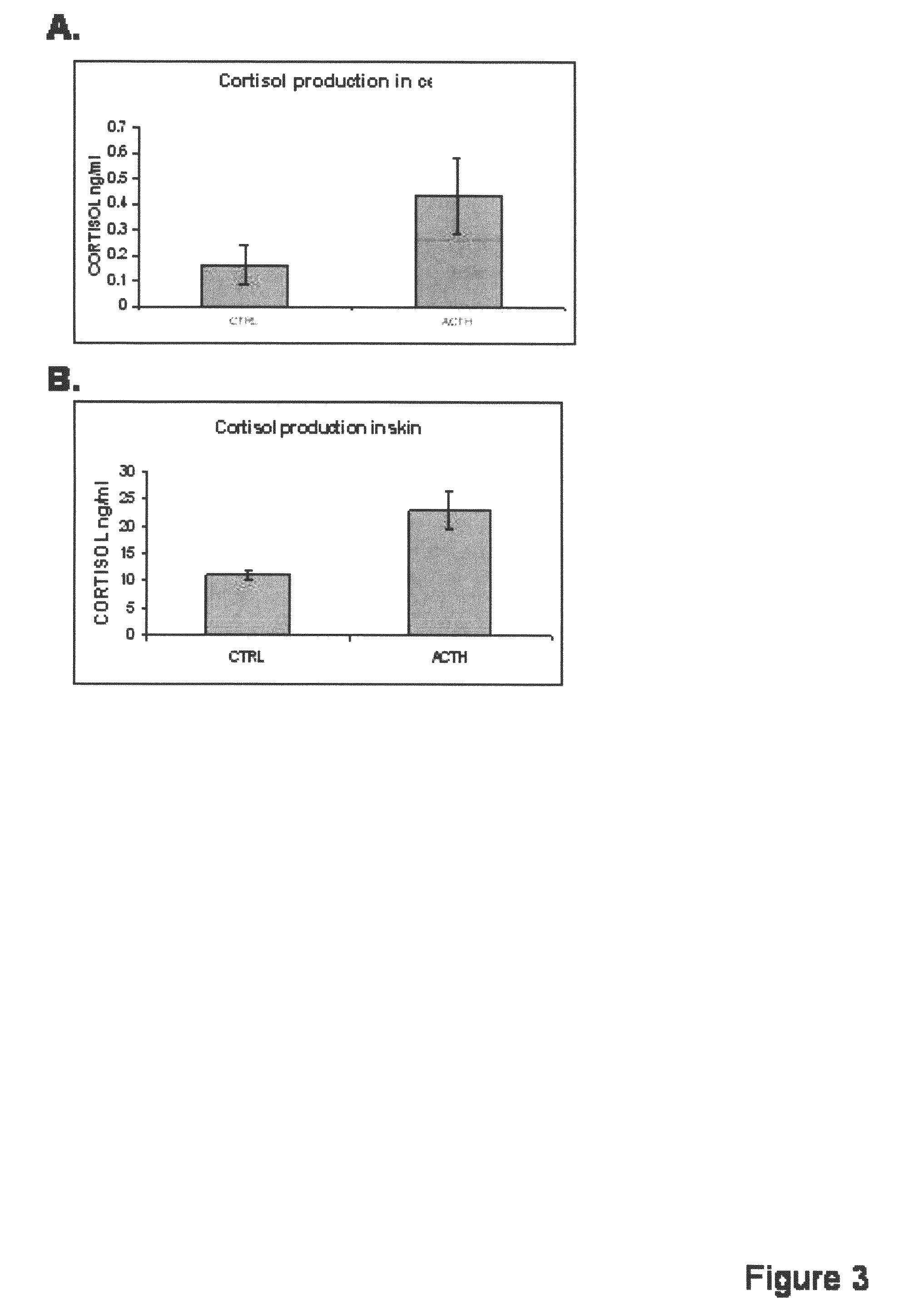De novo synthesis of glucocorticoids in the epidermis and its uses and applications
a glucocorticoid and epidermis technology, applied in the field of epidermis producing glucocorticoids, can solve the problems of erroneous activation of the glucocorticoid receptor pathway and the synthesis of glucocorticoid synthesis in chronic wound tissue, and achieve the effect of increasing the effectiveness of an exogenous glucocorticoid treatmen
- Summary
- Abstract
- Description
- Claims
- Application Information
AI Technical Summary
Benefits of technology
Problems solved by technology
Method used
Image
Examples
example 1
Materials and Methods
[0085]A. Human Specimens and Wounding
[0086]Acute Wounds
[0087]Human skin specimens were obtained from discarded tissue in reduction mammoplasty following approved Hospital for Special Surgery protocol (#25121). Preparation of tissue with acute wounds was done as previously described (Tomic-Canic et al. (2007) Wound Repair Regen. 15(1):71-9); Stojadinovic et al. (2005) Am. J. Pathol. 167(1):59-69). The adipose tissue was removed, and circular templates of skin were generated using a 6 mm biopsy punch. A 3 mm biopsy punch was used to create an acute wound. The skin specimens were maintained at the air-liquid interface with DMEM (BioWhittaker, Walkersville, Md.) with antibiotics-antimycotics, and fetal bovine serum (FBS) (Gemini Bio-Products, Woodland, Calif.) for 0, 4, 48, and 96 hours in the presence or absence of 1 μM dexamethasone (Sigma, St. Louis, Mo.). Acute wounds were fixed in 4% paraformaldehyde (Sigma) at room temperature overnight, dehydrated with ethano...
example 2
Hormone Activated Glucocorticoid Receptor (GR) is Present in Untreated Human Epidermis and Primary Keratinocytes
[0103]Primary human keratinocytes were grown in culture as described above in Example 1(C) and localization of the GR was established using a GR-specific antibody and a fluorescent dye used to stain nuclei, 4′-6-diamidino-2-phenylindole (DAPI) (Sigma), as described in Example 1(F). The results, as shown in FIG. 1(A), established that the GR localized predominantly to the cell nuclei suggesting significant activation of the GR.
[0104]To further evaluate the GR activity, Western Blot as described in Example 1(D), was used to analyze cytoplasmic and nuclear protein fractions for the presence of hormone activated receptor, GR-P (Wang and Garabedian (2003) J. Biol. Chem. 278:50897-901). As shown in FIG. 1(B), there was a significant presence of GR-P (activated GR) in the nuclear fraction of the keratinocytes, confirming the activation of the GC pathway in keratinocytes grown in ...
example 3
CYBP11 is Expressed in the Epidermis and Keratinocytes
[0107]Multiple approaches were used to determine if CYBP11, an enzyme responsible for final glucocorticoid synthesis (converting 11-deoxycortisol to cortisol), is present and expressed in the epidermis.
[0108]Using biopsies of normal human skin and a CYP11B specific antibody, immunohistochemistry as described in Example 1(B), was performed to determine protein presence and localization. The results showed that the CYP11B is present in epidermis. Surprisingly, CYP11B is very specifically distributed in the epidermal tissue. The enzyme is predominantly present in basal and first suprabasal keratinocytes, suggesting a high specificity of expression (FIG. 2A).
[0109]It was confirmed that CYP11B is expressed in both primary keratinocytes and skin biopsies using RT-PCR as described in Example 1(G) (FIG. 2B).
[0110]Finally, proteins were extracted from skin biopsies, epidermis, keratinocytes, and dermal fibroblasts, and analyzed using anti...
PUM
| Property | Measurement | Unit |
|---|---|---|
| color | aaaaa | aaaaa |
| Northern Blot | aaaaa | aaaaa |
| anti-inflammatory | aaaaa | aaaaa |
Abstract
Description
Claims
Application Information
 Login to View More
Login to View More - R&D
- Intellectual Property
- Life Sciences
- Materials
- Tech Scout
- Unparalleled Data Quality
- Higher Quality Content
- 60% Fewer Hallucinations
Browse by: Latest US Patents, China's latest patents, Technical Efficacy Thesaurus, Application Domain, Technology Topic, Popular Technical Reports.
© 2025 PatSnap. All rights reserved.Legal|Privacy policy|Modern Slavery Act Transparency Statement|Sitemap|About US| Contact US: help@patsnap.com



